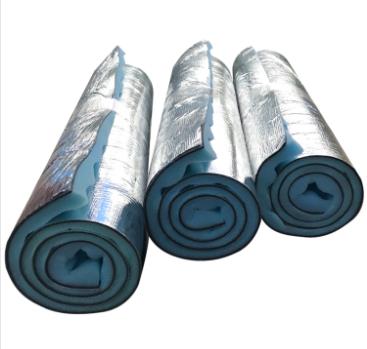When water freezes inside a pipe, the ice expands and causes the pipe to burst. A burst pipe can cause rapid and violent flooding of your property. If you’ve ever had a pipe burst during the cold months, you’ll understand why freezing pipes must be avoided this and every winter.
Insulating pipes reduces their exposure to the elements, reducing the chance of disaster, while saving energy costs by preventing hot water pipes from losing heat.
Which pipes need insulation?
Most homeowners will assume they only need external waterline insulation for pipes and faucets outside the home. But the truth is that any exposed and poorly insulated ducts in your home, such as ducts in unheated spaces like exterior walls, garages, attics, basements, and floor cavities above unheated crawl spaces, will also benefit from insulation.
Insulation methods and materials
The following is a list of materials you may need to complete your duct insulation project, depending on the type of duct you are covering:
adhesive tape
Expanding Spray Foam
foam caulking rope
Insulation Options (Sleeves, Sleeves, Outdoor Faucet Covers)
Foam tube sleeve
One of the easiest of all insulation methods is to use foam sleeving. We recommend this option for longer straight pipes that need to be covered. Most casings are available in six-foot increments and the diameter range depends on the pipe size.
To install foam sleeves on pipes:
Position the casing along the pipe.
Open the sleeve slit and cover the tubing.
Seal the seams with the adhesive or tape provided.
Cut the sleeve to fit the pipe length.
Pipe Wrap Insulation
Pipe-wrap is easy to install and recommended for insulation of small sections of pipe. It is available in a variety of materials including flexible foam with rubber backing, foam and foil duct insulating tape, bubble wrap duct wrap, foil-backed natural cotton wrap and rubber duct insulating tape.
To install duct wrap insulating tape on ducts:
Attach the loose end of the insulating wrap to one end of the pipe.
Wrap it around the pipe in a spiral loop, making sure to cover the entire pipe.
Once enough insulation wrap is in place, cut off the ends.
Outdoor faucet cover
Rigid foam faucet covers are an easy way to protect outdoor faucets from freezing temperatures and ice falling from roofs and eaves. Faucet covers are sold at most hardware stores, or you can order them online.
Here’s how to install a faucet cover:
First, remove the hose from the faucet and put it in a safe place for the winter.
Put the rubber ring around the faucet.
Put the cover on the socket.
Tighten the slide lock to secure the cover in place. Make sure there are no air gaps.
Additional Winter Pipe Protection Tips
No matter what type of pipe insulation you choose, keep an eye on your pipes in the winter. If possible, stop the water flow to the outdoor faucet and turn on the faucet to drain the pipe before the first hard freeze. If you can’t turn off your outdoor water supply, run the faucet occasionally throughout the winter to double-check and make sure the water pressure is normal.
Post time: Aug-17-2022





